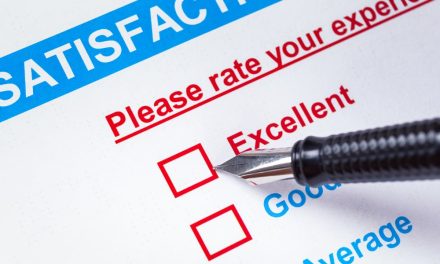Maximizing Customer Reach: A Game-Changer for Business Success
In today’s digital landscape, knowing your customers inside out is a prerequisite for achieving lasting success. The growth and expansion of your business hinge on your ability to formulate an effective strategy that caters to your target audience. This article explores the intricacies of customer reach and how it can be the ultimate game changer for your business, using a well-rounded development approach.
Understanding Your Customers: The Ultimate Business Strategy
Customer-centricity is no longer an option; it’s a necessity for businesses looking to secure their place in a competitive market. Your customers are the lifeblood of your business, and getting to know them better can be the key to unlocking new realms of success.
Personalization is Key to Customer Loyalty
Achieving loyalty from your customers involves recognizing their uniqueness. To maintain their loyalty, you must tailor your products, services, and messaging with personalization in mind. It’s this personalization that will set you apart from competitors.
The Role of Customer Engagement
Your customer engagement strategy is at the core of your success. It involves responsive customer support and maintaining consistency across all touchpoints, ensuring every interaction is a positive one. Engaging customers through active engagement leads to a stronger connection and better retention.
Continuous Improvement: A Path to Growth
Continuous improvement, supported by feedback from your clients, is essential. This strategy doesn’t just resolve customer issues; it ensures that your business is evolving to meet changing customer needs. Feedback is your compass to navigate the complex world of customer engagement.
Building Loyalty Through Loyalty Programs
Loyalty programs and rewards can significantly amplify your customer reach. They not only reward existing customers but also encourage them to refer your business to others. These programs create a win-win situation for both your customers and your business, which ultimately translates into success.
Transparent Communication: A Pillar of Success
Transparency in your communication is another catalyst for success. Your customers should have complete insight into your business operations, from your marketing tactics to the inner workings of your strategy.
Employee Engagement Matters
The role of employee engagement cannot be underestimated in your strategy. Engaged employees are more likely to understand your customers and offer superior service, thus boosting loyalty and sales.
Surprise and Delight: The Secret to Lasting Loyalty
Going the extra mile to surprise and delight your customers is an often-underestimated strategy. When you exceed your customers’ expectations, they become your best marketers, sharing their loyalty for your brand with their network.
CRM Software: An Enabler of Loyalty
CRM (Customer Relationship Management) software can be a game-changer in building customer loyalty. By deploying the right CRM strategy, you can enhance customer engagement, boosting your business‘s success.
Implementing CRM Software
- Define Your Objectives and Goals: Clearly outline your strategy for utilizing CRM software. How will it align with your overall business objectives for growth and expansion?
- Select the Right CRM Solution: Choose a CRM software that aligns with your business needs, supporting your customer engagement and loyalty goals.
- Data Migration and Integration: Migrate and integrate your existing data seamlessly into the CRM system to provide a comprehensive view of your customers.
- Customize for Your Business Needs: Tailor the CRM software to match your business processes and requirements. Ensure that the CRM system supports your personalization strategy.
- Provide Comprehensive Training: Ensuring that your team is well-versed in using the CRM software is pivotal for its success in building loyalty.
Benefits of CRM Software for Customer Loyalty
- Enhanced Customer Engagement: CRM software allows you to personalize interactions, which is vital for customer loyalty.
- Improved Sales and Revenue: Streamlining sales processes and obtaining deep insights into your customers can significantly boost revenue and loyalty.
- Streamlined Marketing Efforts: With a CRM system, you can target your marketing efforts more effectively, increasing customer engagement and loyalty.
- Enhanced Customer Support and Retention: Providing better customer support is a crucial element in retaining customers and fostering loyalty.
- Data-Driven Decision Making: Using CRM data, you can make informed, data-driven decisions that will contribute to customer loyalty and success.
CRM Software Benefits for Your Business
- Efficient Customer Data Management: A CRM system simplifies the management of customer data, making it more efficient and reliable.
- Increased Productivity and Time Management: CRM software saves time, enhancing team productivity and, in turn, customer loyalty.
- Improved Sales Forecasting and Planning: CRM data supports better sales forecasting and planning, which can contribute to loyalty and success.
- Targeted Marketing Campaigns: CRM software empowers targeted marketing campaigns, which are essential for loyalty and customer engagement.
- **Enhanced Customer Retention and Loyalty: Satisfied customers are more likely to stay loyal to your brand, fostering loyalty and success.
- Quick Issue Resolution and Customer Support: CRM software aids in resolving customer issues swiftly, further solidifying loyalty.
- Strategic Decision-Making: The insights provided by CRM data support strategic decision-making, which can lead to loyalty and success.
- Facilitates Growth and Scalability: CRM systems facilitate business growth and scalability, all contributing to loyalty and success.
Building a Robust Marketing Strategy for Customer Loyalty
Leveraging the Power of Social Media
Social media platforms are not just channels for interaction; they’re dynamic tools for customer engagement and loyalty. When you leverage this expansive digital realm, your business gains access to a much broader audience.
Start a Blog
Blogging is an influential component of your customer engagement strategy. It allows your business to share valuable, relevant content that resonates with your target audience. This resonance is instrumental in fostering loyalty, as your audience connects with your brand on a deeper level.
Mastering Search Engine Optimization (SEO)
Effective SEO strategies are pivotal in expanding your online presence and attracting new customers. While driving new business is vital, it’s equally important to focus on customer loyalty and maintaining the support of your existing customer base. SEO is the bridge that connects these two aspects, boosting your online visibility and ultimately driving loyalty and success.
Crafting Irresistible Calls to Action (CTAs)
Calls to action (CTAs) are like guiding stars in your marketing content. By including CTAs strategically within your content and marketing materials, you can actively guide potential customers towards taking action. Whether it’s signing up for a newsletter or making a purchase, CTAs are your tools to encourage these actions and, in the process, enhance your loyalty base.
Partnering with Influencers
Collaborating with influencers in your industry has become a powerful strategy for businesses. It’s a gateway to exposing your brand to a broader audience. When influencers endorse your products or services, their followers are more likely to trust your brand. This trust is fundamental in cultivating loyalty.
Building an Engaged Mailing List with Email Marketing
Email marketing is a direct and highly personalized way to engage with your customers. It’s not only about attracting new customers but also about maintaining the loyalty of your existing customer base. With personalized and relevant content delivered directly to their inboxes, you can ensure your customers remain engaged and loyal.
Establishing an Affiliate Program
An affiliate program can be a potent addition to your customer loyalty strategy. This program encourages individuals, often customers themselves, to promote your business in exchange for commissions. As your affiliates advocate for your brand, they bring in new customers and further enhance loyalty among your existing ones.
Enhancing Customer Experience with Live Chat
Live chat support has proven to be a game-changer when it comes to improving the customer experience. By providing real-time assistance, answering queries, and resolving issues promptly, you can significantly enhance the customer experience. A happy customer is more likely to stay loyal and contribute to your business’s overall success.
Turning Buffet’s Wisdom into Customer Loyalty
Warren Buffett, a renowned investor, has a set of principles that have guided his success. Surprisingly, these principles can be expertly applied to foster lasting customer loyalty. By understanding and thoughtfully implementing these principles, you can bridge the gap between traditional investment strategies and the cultivation of unwavering customer loyalty.
Bridging the Gap Between Investment and Customer Loyalty
To embark on this journey, it’s vital to understand the significance of Customer Lifetime Value (CLTV) and how it can be amplified to ensure long-term business success. This metric, often regarded as the unsung hero of business metrics, has the transformative potential to reshape your business landscape and nurture loyalty.
LTV: The Unsung Hero of Business Metrics
Customer Lifetime Value (CLTV) is a metric with untapped potential to revolutionize your business. Its impact extends far beyond the financial realm, as it holds the key to fostering unwavering customer loyalty.
Warren Buffett: An Investment Genius
Warren Buffett, an investment genius, has left an indelible mark on the financial world. His wisdom transcends traditional investment strategies and has the power to inspire your customer-centric approach, leading to lasting customer loyalty.
Principle #1: The Competitive Moat
Buffett’s first principle is to build a competitive moat around your investments, protecting them from external threats. Similarly, understanding and building a competitive edge in your business is vital for boosting CLTV, thereby fostering customer loyalty and overall success.
Boosting LTV Through Competitive Edge
Embracing the concept of a competitive moat in your business can significantly enhance CLTV. This enhanced CLTV results in increased customer loyalty and overall success.
Principle #2: Invest in What You Understand
Buffett’s second principle emphasizes investing in what you understand. Applying this principle not only leads to sound investments but also to a deeper understanding of customer needs. This, in turn, can amplify customer loyalty and pave the way for sustained success.
LTV Amplified Through Deep Understanding
Exploring a deep understanding of your customers and their needs can be a powerful amplifier for Customer Lifetime Value. This, in turn, drives customer loyalty and business success.
Principle #3: Value Investing
Buffett’s third principle is all about value investing. Translating these principles into the context of CLTV can significantly impact your long-term customer relationships, fostering loyalty and success.
Translating Value Investing to CLTV
Discover how the principles of value investing can be thoughtfully applied to CLTV, solidifying customer loyalty and ensuring business success.
Principle #4: The Power of Long-Term Perspective
Buffett’s final principle revolves around taking a long-term perspective in investments. Applying this same approach to customer relationships can lead to enhanced CLTV, ultimately driving customer loyalty and success.
The Longevity Factor in Customer Lifetime Value
Explore the significance of longevity in Customer Lifetime Value and how it influences customer loyalty. Just as Buffett’s long-term perspective has shaped his success, the same principle can be applied to nurture loyal customer relationships.
Conclusion
Customer reach is the catalyst for business success. It goes beyond mere website traffic, encompassing trust, credibility, conversions, and loyalty. To outrank your competitors on Google, embrace strategies like quality content creation, SEO optimization, social media engagement, email marketing, influencer collaborations, data-driven insights, and mobile optimization. By doing so, you can take the lead in your industry and secure your position at the forefront of your audience’s minds.
FAQ: Maximizing Customer Reach
1. What is customer reach, and why is it important for my business?
Customer reach refers to the ability of your business to connect with and engage potential and existing customers. It is vital for your business’s success because a broader reach means more opportunities to attract, retain, and satisfy customers, ultimately driving growth and revenue.
2. How can I improve my customer reach?
To enhance customer reach, you can implement various strategies such as digital marketing, social media campaigns, search engine optimization (SEO), content marketing, and email marketing. Each of these approaches can help you connect with a wider audience.
3. What role does customer reach play in marketing strategies?
Customer reach is a fundamental aspect of marketing. It ensures that your marketing efforts are seen by your target audience. Without effective customer reach, your marketing campaigns won’t reach their full potential in terms of acquiring and retaining customers.
4. What’s the difference between customer reach and customer engagement?
Customer reach is about making your brand visible to a larger audience, while customer engagement focuses on building relationships and interactions with those who have been reached. Both are essential for business success, with reach being the first step towards engagement.
5. How do I measure the effectiveness of my customer reach strategies?
You can measure the effectiveness of your customer reach strategies by tracking key performance indicators (KPIs) such as website traffic, social media engagement, click-through rates, conversion rates, and customer acquisition cost. These metrics provide insights into the impact of your efforts.
6. Is customer reach only relevant for online businesses?
No, customer reach is relevant for both online and offline businesses. While online businesses leverage digital channels, offline businesses can utilize traditional marketing methods like local advertising, events, and community outreach to expand their reach.
7. How can I ensure that my customer reach strategies are cost-effective?
To ensure cost-effective customer reach strategies, it’s essential to target your efforts towards the most relevant audience and platforms. Conduct thorough market research and use analytics to optimize your campaigns, reducing unnecessary expenses.
8. What’s the role of personalization in maximizing customer reach?
Personalization tailors your marketing messages to individual customers, making them more relevant and engaging. It can significantly boost your reach by attracting and retaining customers who feel a stronger connection to your brand.
9. How can I balance customer reach with customer retention efforts?
Balancing customer reach and retention involves maintaining a focus on both acquiring new customers and nurturing existing ones. It’s important to have a holistic approach to your marketing and customer relationship strategies to ensure a sustainable business.
10. Can you recommend some tools to help businesses maximize customer reach?
Certainly! There are various tools and platforms that can assist in maximizing customer reach, including Google Analytics, social media management tools like Hootsuite, email marketing platforms like Mailchimp, and SEO tools like Moz. These tools can help analyze and improve your reach strategies.










